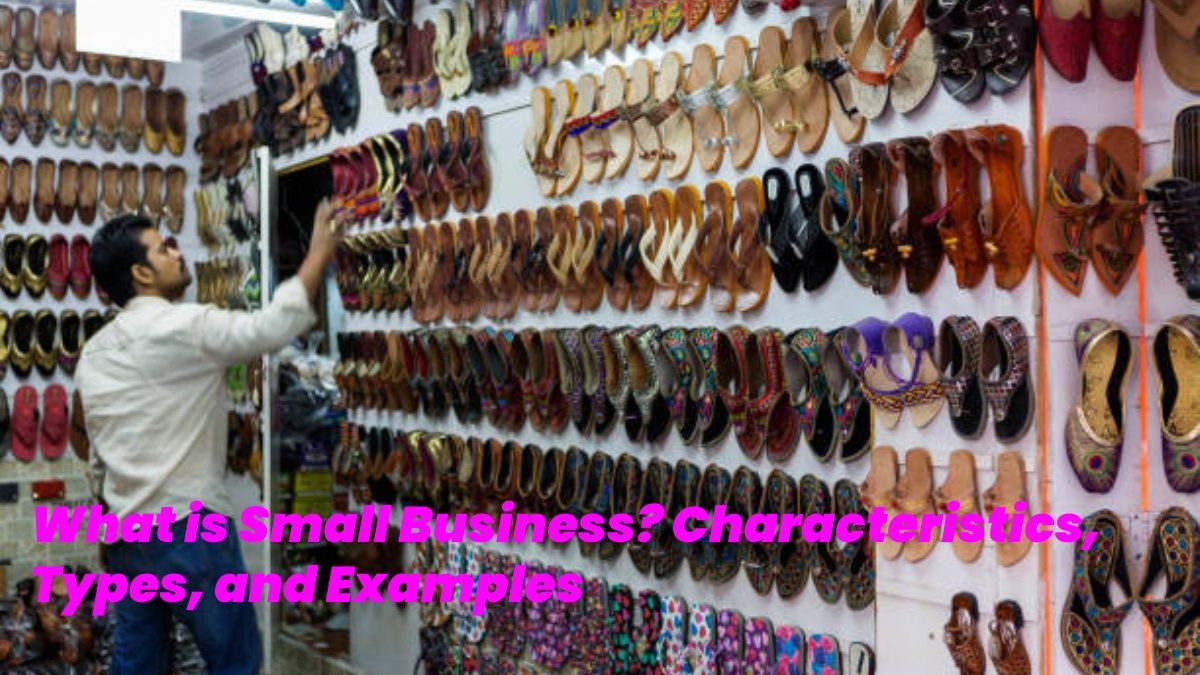What is Small Business?

A small business, in other words, is a type of organization. This receives its name because it has reduced dimensions compared to different companies. In Europe, a small company has an employee workforce of fewer than 50 workers but more than 10. As for the turnover volume, this same regulation establishes that to be considered a small company, it must invoice annually less than €10 million ($12.1 million).
As we said, these criteria vary depending on the country to which we refer. In this sense, the United States, through the Small Business Administration (SBA), establishes that a small business has less than 500 employees. While Mexico, as another notable example, shows this range between 11 and 30 workers; this, in addition to a turnover between 4 and 100 million pesos.
Main Characteristics of the Small Business
As we said, these characteristics may vary depending on the country to which we refer. However, those characteristics of the small company are exposed:
- You must have between 10 and 50 workers.
- Its turnover must not exceed 10 million euros.
- It has reduced dimensions compared to other companies of higher categories.
- It is superior, in size, to micro-enterprises but smaller than the medium-sized enterprise.
- Together with the latter, the medium-sized company, they form what is known as an “SME”.
Together with the medium-sized company, they are the predominant category in the different productive fabrics of the planet.
Types of Small Business
Although the criteria vary between countries, the different types of companies globally are usually the same.
In this sense, we speak of four types and a particular classification:
Microenterprises: They are the lowest category by size. They usually have between 0 and 10 workers.
Small Business: This is the category we address in this article.
Medium-sized company: It is a higher category due to its larger size. By employees, they usually have between 50 and 250 workers.
Large company: Those larger companies, with a staff of more than 250 workers and even bringing together others of more than 50,000. The most famous multinationals we know are good examples of large companies.
Difference between Micro and Small Business
On many occasions, these two categories are often confused. The appearance of the figure “micro-enterprises” confused many people, who believed it referred to small businesses; this concept is a mere synonym. However, this is not so.
As we said in the section that exposes the classification, micro-enterprises are those companies that are usually recently created. Their billing level is considerably lower than that of companies in higher categories. At the same time, as stated, they must have templates that range between 1 and 10 employees.
Thus, we are talking about another type of company, of a smaller size than small companies.
Also Read: How to Build A NFT Fashion Marketplace?
Small Business Example

Considering the characteristics above, we must know that every small company meets the requirements established by the legislation of each territory.
In Europe, as we said, a company with a workforce of between 10 and 50 employees, with a turnover of fewer than 10 million euros, is a small company.
What is the Tax Regime for Micro and Small Companies?
MSEs classified according to the criteria of General Law nº 123/2006 may opt for the Unified Special Regime for Collection of Taxes and Contributions Owen by Micro and Small Businesses – Simples national.
Simples provide for a reduction in the tax burden and simplification of the calculation and collection processes. Tax rates vary according to revenue in the last 12 months and the field of activity.
There are activities carries out by MSEs that prevent the adoption of simplifies regime, for example, factoring, intercity and intercity passenger transport, power generation, import or manufacture of automobiles, and production of cigarettes, soft drinks and flavoured waters, among others. In this case, Mpes must adopt the actual presumes profit taxation regimes.
What are the Challenges for Micro and Small Companies?
The main challenges for micro and small companies to remain in the market are the lack of planning and little management training, the excessive bureaucracy to obtain credit and the high tax burden.
With the economy sluggish and the high cost of credit, micro and small companies face more significant challenges and need special treatment to survive in the country. According to the IBGE, the average survival of a micro or small company in Brazil is five years.
Also Read: What are the Latest Trends in Influencer Marketing?
How to Get a Loan for Micro and Small Businesses?
There are many lines of financing available to micro and small companies. CNI has Credit Access Centers (NAC) present in 24 states. NAC is a support service for micro, small and medium-sized industrial companies, provided by the State Federations of Industries and coordinated by the CNI.
The centres have trained professionals able to guide companies in accessing resources to make investments and the operation of the industrial sector viable, contributing to modernization, increased competitiveness, and expansion of production capacity. In case of doubts or further information, look for the NAC closest to your company.
Conclusion
A small business company is a productive unit that, within SMEs, is larger than a micro-enterprise. If but smaller than a medium-sized company in the number of employees, the value of sales, and its assets.
Small businesses have a greater patrimonial, administrative and financial structure than micro-businesses. Which gives them the possibility of offering mortgage guarantees and acquiring loans.
According to its particularities, each country will determine the classification of companies, taking into account the number of employees, income, and assets. Generally, a small company has between 10 and 50 workers.
Also Read: How to Build an Authentication Flow with React Navigation v5?


